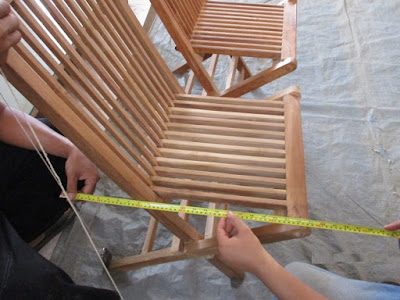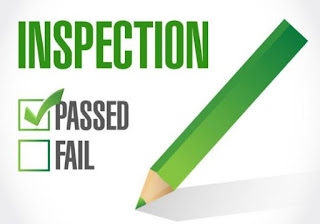Quality Control Procedure
Some of the recommendations below may not all be applied directly by considering the type of goods and the nature of consumers. We strive for this procedure to generally represent all QC activities in the field especially QC for inspection before shipment.
- This article is specifically for those of you who work as QC or prepare manuals for QC.
- Make sure that you have complete documentation about the product to be inspected. The document must include at least product specifications, order quantity, and basic inspection rules.
- QC equipment must be available and working properly such as meter / caliper, MC meter, screwdriver or Allen key (if necessary), color samples and others.
- Inspections should be carried out globally first starting with the packing and the number of goods available whether it is sufficient. This is important to be included in the inspection report.
- Inspection of the quality of the use of the main material in the furniture. For example, the main material is MDF, check whether it is true that the material used is MDF? Not another material? Or if the main material is solid wood, check whether the type of wood used is according to specifications.
- The quality of work as another part must be checked. Check the quality of machining and assembly, and also check the quality of the door and drawer settings (if any).
- Check the quality and type of finishing used. Make sure that the finishing is in accordance with the specifications and the quality is in accordance with the agreed standards, especially the color of finishing.
Furniture hardware or fixtures are the next part to check.
Inspections include the quality of hardware, installation of furniture and the
number of equipment. The final part of the inspection that is no less important
is to use a product that is being inspected according to its function. For
example, a chair, try sitting on it. And if you are inspecting drawers, try
opening the drawer for several times to get an idea of what consumers will
find when buying these items.
Apart from all the processes mentioned above, it will be
very important if when you do the assembly (for knock down products) with the
help of others who do not understand at all about the technical. This will be
very good to know whether your product is worthy to be marketed. There are many
people out there who don't understand the technicalities but have to assemble
the furniture they have bought. In Indonesia, the routine will usually get
special people who understand to help assemble the product. But if you produce export products? Will they have special
people like that? The answer is 'Yes' but the cost for it can be more expensive
than the price of your product
PRODUCT DIMENSION CHECK
MOISTURE CONTENT (MC) CHECK
PREVENTION OF ERRORS WITH QUALITY ASSURANCE: Quality Assurance (QA) focuses on the ability of a process
to produce or deliver quality products or services. QA is different from
Quality Control (QC) where QA looks at the entire business process not just the
final product. QC is used to detect problems with products or services, while
QC is used to solve problems by "sampling" a production process until
it can produce quality products.QA and QC are interrelated. By continuously improving the
industrial process, it will also improve the quality of the product or service.
The most well-known technique is Plan-Do-Check-Action or PDCA cycle.
This simple but very effective method can:
- improve planning in an industrial process by looking for problems that affect the quality of a company's products or services.
- Make improvements by implementing small changes to minimize damage to industrial processes.
- Checking production results to see if what has been done results in improvements.
- Acting on the basis of findings and running them throughout industrial processes
CONTROLLING QUALITY WITH INSPECTION: The basic technique of QC is to inspect the results of
production or service whether the process has been carried out in accordance
with customer requirements (it conforms to customer requirements). Conformity
(conforming) means that the product is produced in accordance with consumer
desires while non-conforming (non-conforming) means it is not appropriate.
Although inspections can ensure up to 100% of the product
or service is running well, it can be a very expensive process, especially for
items that are very large in number but have low economic value (eg button
quality inspection). Or inspections that can damage the product (for example,
bullet product inspection)
You May Also Like:
- How to use Acceptable Quality Level (AQL)
- Container Loading Check
- Carton Drop Test Check
- Electronics Inspection
- During Furniture Inspection
- During Hard-Lines Inspection
- Preshipment Inspection Furniture
- Furniture and Rattan Inspection
- How to Step use Moisture Content (MC)
- How to check Moisture Content (MC) wood
- Pre-Shipment Inspection Hardlines and Softlines







Belum ada Komentar untuk "Quality Control Procedure"
Posting Komentar